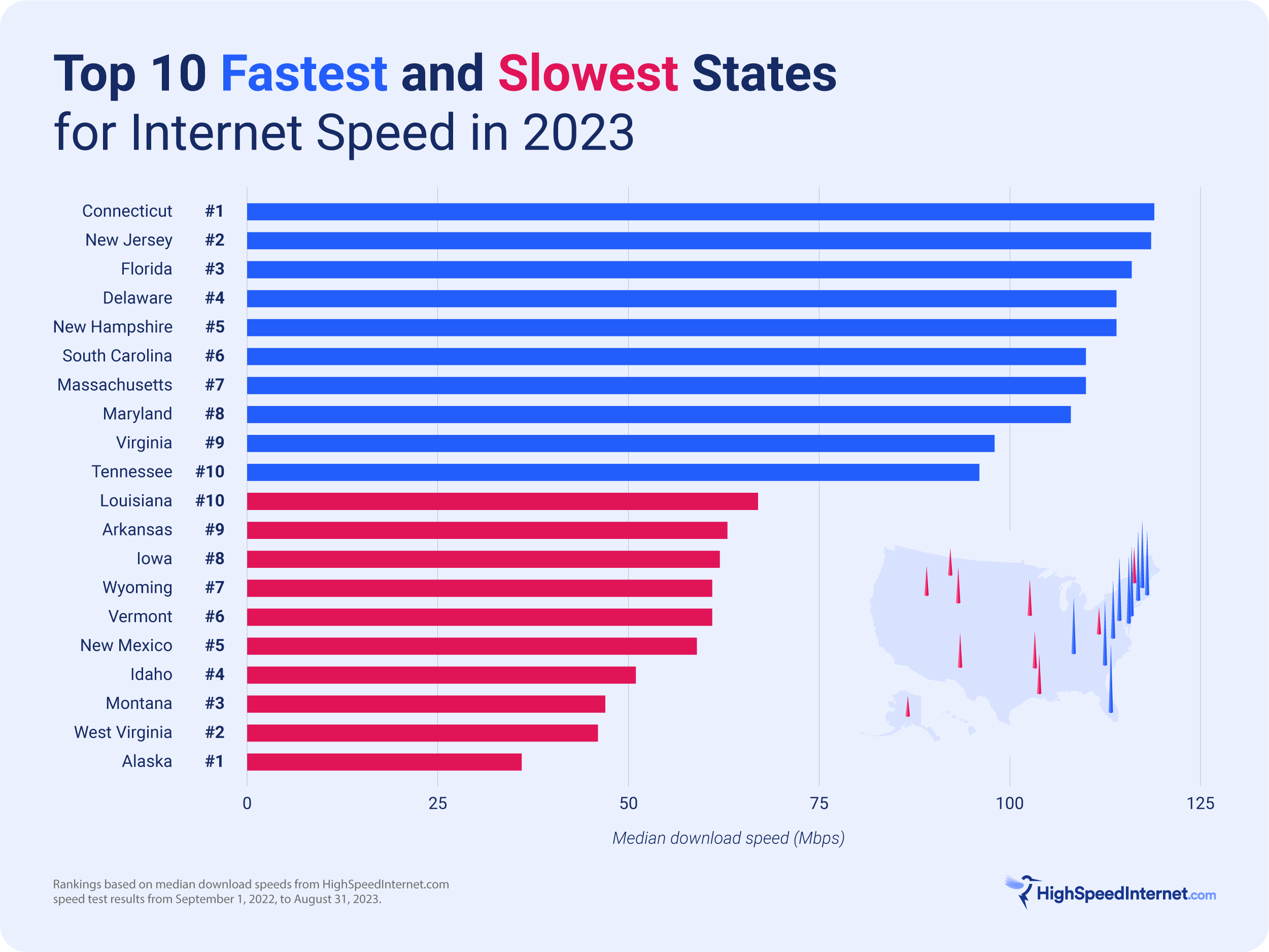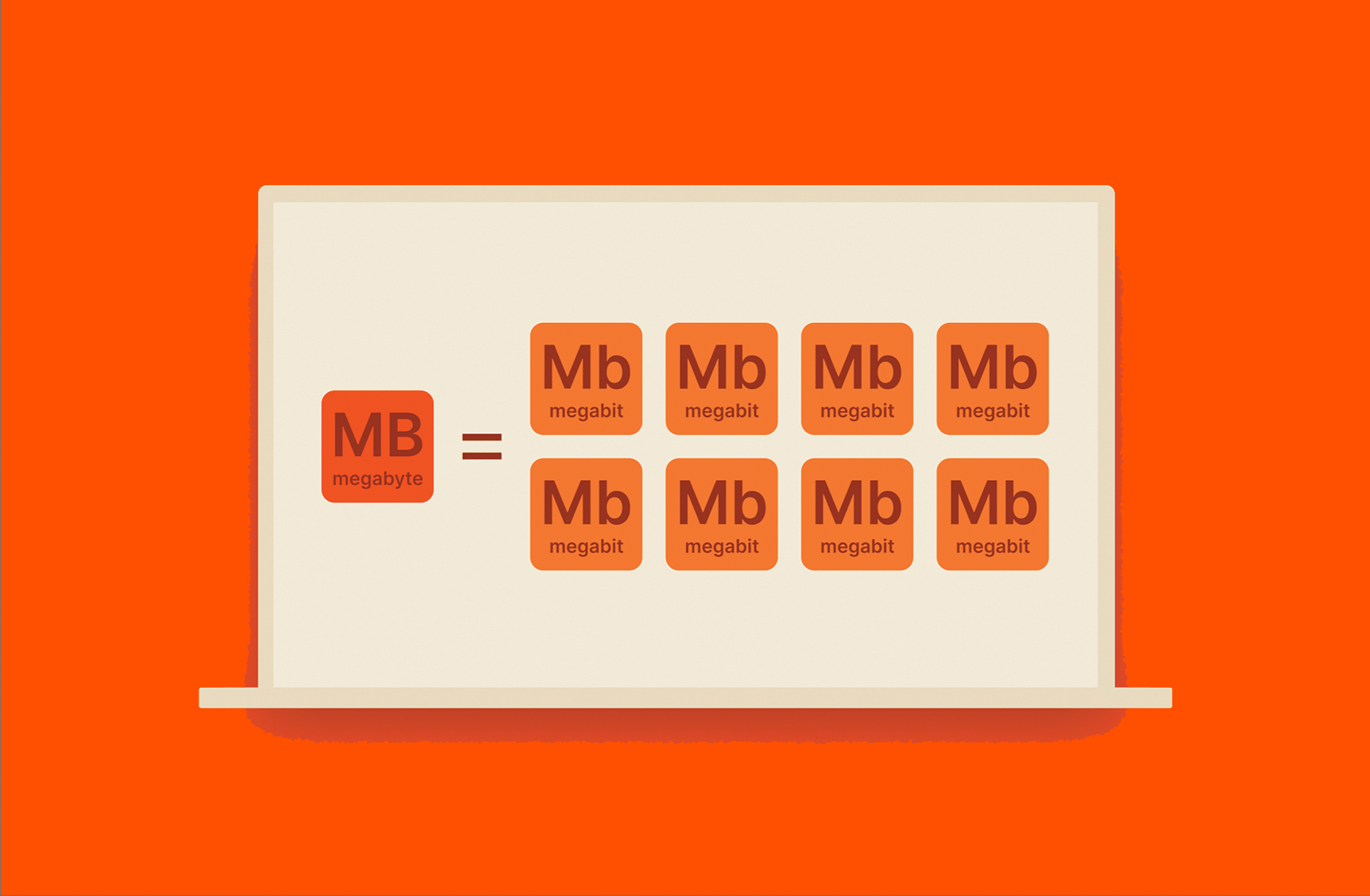The Influence of Megabits Per Second on Streaming High Quality and Efficiency
The Influence of Megabits Per Second on Streaming High Quality and Efficiency
Blog Article
Exactly How Megabits Per Second Effect Your Online Tasks
The principle of megabits per second (Mbps) plays a crucial function fit our on-line experiences. As electronic tasks multiply, recognizing the effects of Mbps on streaming, video, and gaming conferencing comes to be significantly vital. Greater Mbps can boost efficiency and minimize disturbances, while insufficient speeds might promote irritation and ineffectiveness. Evaluating your family's certain requirements in regard to these speeds is essential, specifically as multiple devices vie for transmission capacity. Yet, the subtleties of exactly how Mbps affects numerous online tasks require additional exploration, specifically as our reliance on electronic connection remains to evolve.
Understanding Megabits Per Second
When thinking about internet rate, it's essential to recognize the concept of megabits per second (Mbps), which works as a basic dimension for data transfer rates. This statistics evaluates how much data can be sent over a web connection in one second, supplying a clear understanding of efficiency abilities - Megabits Per Second. For context, one megabit is equivalent to one million bits, and Mbps is frequently used to reveal transmission capacity for numerous online tasks
A greater Mbps indicates a quicker internet link, making it possible for users to do jobs such as downloading data, surfing websites, and engaging in on the internet video gaming much more successfully. Common browsing needs around 1-5 Mbps, while streaming high-def video clip might require 5-25 Mbps. Understanding these demands is vital for determining the suitable web rate required for particular tasks.
Furthermore, the variety of tools attached to a network can influence total efficiency. Numerous users streaming, gaming, or downloading at the same time can strain available bandwidth, causing slower rates - Megabits Per Second. Assessing personal online practices and requirements is vital in selecting a net strategy that straightens with one's requirements, making sure a seamless digital experience
Streaming and Buffering Issues
Streaming high-definition content has become a staple of modern on-line amusement, yet it is usually come with by irritating buffering problems. These disruptions can considerably interfere with the viewing experience, bring about discontentment and prospective loss of target market interaction. Buffering happens when the data sent from the streaming service is not received promptly enough to maintain a smooth playback, often due to not enough internet rate determined in megabits per second (Mbps)

In addition, real-time streaming can be influenced by network blockage, which happens when multiple gadgets share the same bandwidth. Enhancing connection rate and guaranteeing adequate Mbps is crucial for a seamless streaming experience. As streaming solutions remain to progress, understanding the influence of Mbps on buffering problems remains critical for customers looking for nonstop enjoyment.
Online Gaming Efficiency
The effect of net speed on online tasks prolongs past streaming, substantially influencing on the internet gaming efficiency. In competitive gaming, low latency and high transmission capacity are vital for a seamless experience. A quick link reduces lag, allowing gamers to respond promptly to in-game events, which can be the difference in between victory and defeat.
Transmission capacity, gauged in megabits per second (Mbps), plays an important duty in supporting several tools and gaming systems simultaneously. Inadequate data transfer can lead to dropped links or lowered game high quality, adversely influencing gameplay. On-line multiplayer games require considerable data transfer, specifically during peak pc gaming hours when countless players are online.
Fast-paced first-person shooters require greater rates to preserve responsiveness, while turn-based technique games might work fairly well on lower rates. As online gaming proceeds to progress, with enhancing visual integrity and more intricate multiplayer atmospheres, the demand for greater Mbps will only magnify.
Video Clip Conferencing High Quality
In today's digital landscape, video clip conferencing top quality is greatly influenced by net speed, specifically in regards to bandwidth and latency. Top quality video clip calls need sufficient transmission capacity to transfer sound and video data effortlessly. Usually, a minimum of 1.5 Mbps upload and download speeds is recommended for typical meaning video, while high-def video conferencing normally requires a minimum of 3 Mbps.
Latency, or the delay in between sending out and receiving data, additionally plays a crucial function in the individual experience. Greater latency can lead to echo, lag, and disjointed communications, which can prevent collaboration and engagement during meetings.
Additionally, numerous participants in a video conference can stress offered bandwidth, necessitating even greater speeds. Network blockage, often click here now caused by simultaneous activities like streaming or downloading, can additionally weaken video clip high quality. Therefore, for companies depending on video clip conferencing for remote partnership, comprehending the partnership in between megabits per overall and second communication quality is important for preserving productivity and enhancing virtual interactions.
Choosing the Right Net Plan
Picking an ideal web plan is essential for guaranteeing optimum efficiency in various on-line activities, specifically in settings that demand high data transfer, such as video conferencing and online gaming. Megabits Per Second. When thinking about an internet strategy, it is vital to review both the rate and data allowance to match your details use requirements
For households with numerous customers participating in simultaneous tasks, a plan offering greater megabits per second (Mbps) is advised. Generally, a minimum of 25 Mbps is suitable for standard streaming and surfing, while plans going beyond 100 Mbps are preferable for even more intensive jobs. Furthermore, consider the nature of your online tasks; video conferencing calls for at least 1.5 Mbps upload rate, while on-line gaming learn this here now might need a reduced latency however regular connection.
Endless data plans can protect against throttling and disruptions, specifically if heavy usage is expected. By attentively picking an internet strategy customized to your requirements, you can boost your on the internet experience, making sure smooth, nonstop access to your favored activities.
Final Thought
Finally, the importance of megabits per second (Mbps) in shaping online activities can not be overstated. Greater Mbps promotes seamless streaming, decreases buffering, improves video gaming experiences, and ensures premium video conferencing. On the other hand, inadequate bandwidth can bring about aggravating disturbances and diminished performance across numerous jobs. A thorough understanding of specific or home Mbps requirements is crucial for picking a suitable internet strategy that sufficiently supports varied online tasks and customer demands.

Generally, a minimum of 25 Mbps is appropriate for conventional streaming and browsing, while plans going beyond 100 Mbps are more effective for more extensive tasks. Additionally, consider the nature of your online tasks; video clip conferencing my explanation needs at least 1.5 Mbps submit speed, while on-line pc gaming may need a reduced latency yet constant link.
Report this page